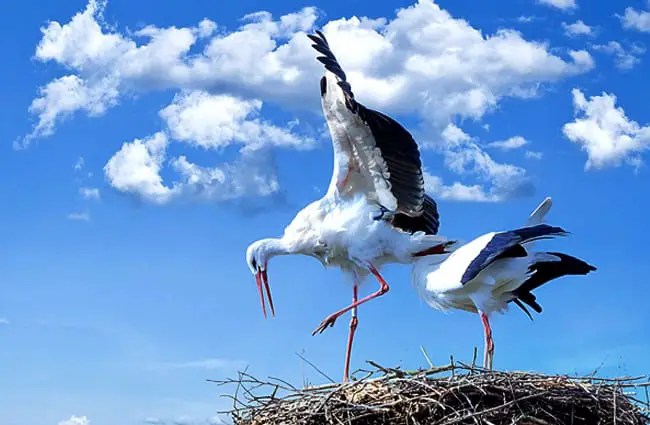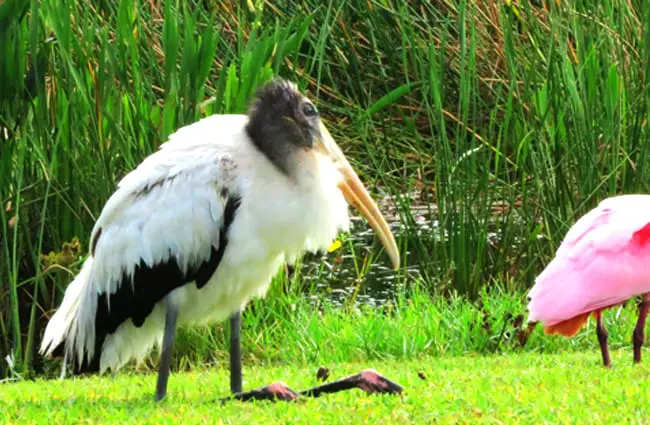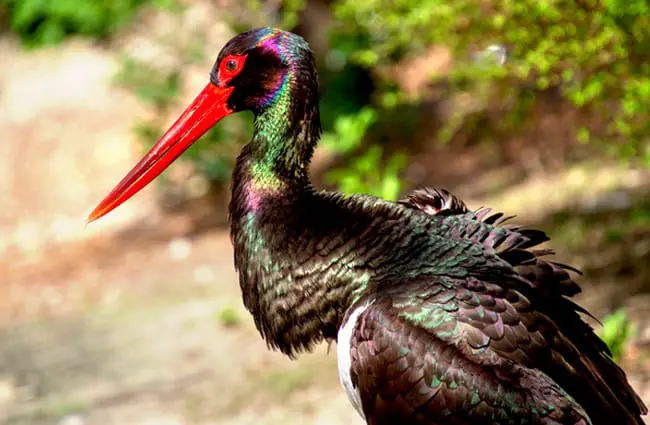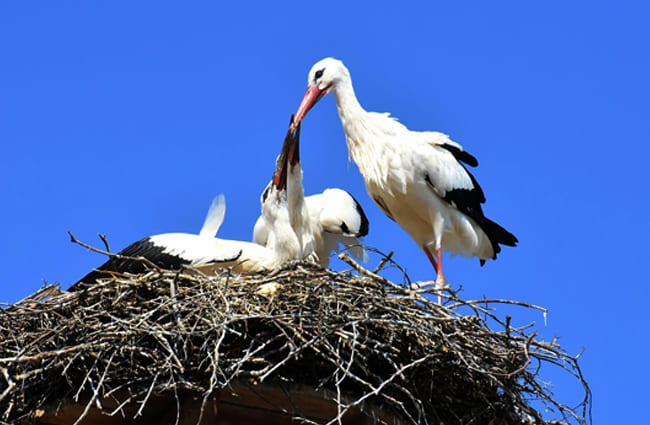Storks are magnificent birds, instantly recognizable by their long legs, necks, and bills. They evoke images of springtime, babies, and good fortune in many cultures, but there’s far more to these birds than folklore. This article delves into the fascinating world of storks, covering their biology, behavior, habitat, and their intricate relationship with both the environment and humankind.
What is a Stork? A Comprehensive Overview
Storks belong to the family Ciconiidae, a group of large wading birds. There are about 20 species of storks around the world, each with unique characteristics. Storks are generally large, ranging from roughly 2 to 4 feet in height, with wingspans that can exceed 6 feet. They are found mainly in warm habitats, though some species migrate long distances.

Stork Species Diversity
While many people think of the White Stork, the family is incredibly diverse. The Marabou Stork is a large scavenger found in Africa, known for its massive size and distinctive pouch. The Jabiru is a large stork from South America, noted for its striking black and white plumage. The Black‑necked Stork is found in Africa and Asia and has a distinct appearance. The Wood Stork, found in North and Central America, relies on tactile feeding, probing for prey in murky water.
Habitat and Distribution
Storks occupy a wide range of habitats, from wetlands and marshes to grasslands and even urban environments. The distribution varies by species. White Storks often nest on rooftops in Europe, while other species prefer secluded swamps and forests. Many storks are migratory, traveling thousands of miles between breeding and wintering grounds, using thermal updrafts to conserve energy. Suitable habitats provide ample food, nesting sites, and safe roosting locations.

Evolutionary History
The evolutionary history of storks dates back to the Eocene epoch, over 50 million years ago. Fossil evidence suggests that early stork ancestors were more widespread than present-day species. Over time, storks diversified into various ecological niches, leading to the distinct species we see today. Their skeletal structure reflects adaptations for wading, with long legs and a lightweight frame. Phylogenetic studies that use both morphological and genetic data have helped scientists reconstruct the evolutionary relationships between different stork species. Understanding this history provides insights into their current distribution and adaptations.
Diet and Feeding Behavior
Storks are primarily carnivorous, feeding on a variety of animals. Their diet includes fish, amphibians, reptiles, insects, small mammals, and occasionally other birds. They employ different hunting strategies depending on the species and environment. Some storks wade through shallow water, probing for prey with their bills. Others hunt from the air, soaring over fields and marshes in search of food. The Wood Stork’s tactile feeding method is particularly fascinating; it swings its bill from side to side in murky water, feeling for fish and other aquatic creatures. Storks often forage in groups, increasing their chances of finding food.
Mating and Reproduction
Storks are generally monogamous, forming long‑term pair bonds. They are known for elaborate courtship displays that may involve bill‑clattering, wing‑spreading, and dancing, helping strengthen the bond and synchronize breeding behavior. Storks build large nests, often reusing them for many years. These nests, typically constructed from sticks, mud, and other materials, can reach impressive sizes. The female lays a clutch of several eggs, and both parents share the responsibility of incubating them. The chicks are altricial, meaning they are born helpless and require extensive parental care. Young storks fledge after several weeks but continue to rely on their parents for food and guidance for some time.

Ecological Role and Interactions
Storks play an important role in the ecosystems they inhabit. As predators, they help control populations of various animals and contribute to nutrient cycling through their foraging and waste products. Storks often share their habitat with other species, and interactions can be both positive and negative. They may compete with other birds for food and nesting sites, but they can also benefit other species by creating foraging opportunities or providing nesting platforms. Storks are sometimes followed by other birds, such as herons and egrets, which feed on prey disturbed by the storks.
Storks and Human Culture
Storks have held a prominent place in human culture for centuries. In many cultures they are seen as symbols of good luck, prosperity, and new life. The association with childbirth stems from the old belief that storks bring babies. In some cultures, storks are considered sacred animals and are protected from harm. They frequently appear in folklore, mythology, and art, and their majestic appearance and graceful flight have inspired countless artists and writers.
Stork Interactions with Humans
Historically, storks have benefited from human activities, especially agriculture. Fields and pastures provide foraging opportunities, and rooftops offer ideal nesting sites. Modern agricultural practices, such as pesticide use and farm intensification, have negatively impacted stork populations. Habitat loss and degradation also pose significant threats. Conservation efforts—such as habitat restoration and the provision of artificial nesting platforms—are crucial for protecting these birds. Public awareness and education are important for promoting coexistence between storks and humans.

Encountering a Stork in the Wild
If you encounter a stork in the wild, observe it from a distance and avoid disturbing it. Do not approach the nest, as this could cause the parents to abandon it. Keep pets on a leash, as they may harass the bird. Report any injured or distressed storks to local wildlife authorities.
Caring for Storks in Captivity
Zookeepers caring for storks should provide a spacious enclosure with a variety of substrates, including mud, grass, and water. The enclosure should also include perches and nesting platforms. The diet should consist of fish, amphibians, insects, and other appropriate foods. Enrichment activities, such as puzzle feeders and novel objects, are important for stimulating the birds and preventing boredom. Regular veterinary care is essential for maintaining the health and well-being of the storks.

Interesting Stork Facts
- Storks can live for over 20 years in the wild.
- They communicate using a variety of vocalizations, including bill‑clattering and hissing.
- Some stork species are capable of soaring for hours without flapping their wings.
- Storks play an important role in controlling insect populations.
- They are known for their impressive migratory journeys.

In conclusion, storks are fascinating birds with a rich evolutionary history, complex behavior, and important ecological role. Their cultural significance and intriguing characteristics make them a subject of enduring fascination for scientists and nature enthusiasts alike. By understanding and appreciating these magnificent creatures, we can help ensure their survival for generations to come.


![Red Angus Closeup of a beautiful Red Angus cowPhoto by: U.S. Department of Agriculture [pubic domain]https://creativecommons.org/licenses/by/2.0/](https://animals.net/wp-content/uploads/2020/03/Red-Angus-4-238x178.jpg)




![Red Angus Closeup of a beautiful Red Angus cowPhoto by: U.S. Department of Agriculture [pubic domain]https://creativecommons.org/licenses/by/2.0/](https://animals.net/wp-content/uploads/2020/03/Red-Angus-4-100x75.jpg)

